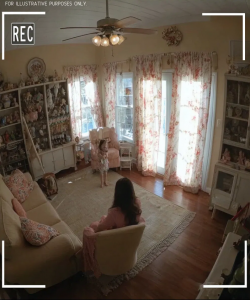Martha, mother of 4-year-old Beverly, had a consistent weekday routine: her daughter attended daycare while both she and her husband, Jason, worked full-time. About a month earlier, Jason’s mother, Cheryl, had offered to babysit Beverly every Wednesday. She said she wanted more time with her granddaughter and thought it would be good for Beverly to take a break from daycare once a week. At first, it seemed harmless—and would save on daycare costs too.
But soon after, Beverly started acting strangely. She became distant with Martha, and one night before bed, she oddly mentioned a “friend” who was “part of the family.” Martha had never heard of this person, and the comment triggered her instincts.

At a family breakfast, Martha casually mentioned Beverly’s new “friend” to Cheryl, who quickly dismissed it, chalking it up to the imagination of a small child. But Martha wasn’t convinced—something felt off.
That same night, she installed a hidden camera in the living room.
The next day, she reviewed the footage—and what she saw was unthinkable. Cheryl had been telling Beverly that her “friend”—someone they shouldn’t tell mommy about—would be visiting. Minutes later, Alexa, Jason’s ex-wife, walked into the house. Beverly ran to her, overjoyed, as if it was a regular, planned visit.
Heartbroken, Martha interrupted the scene and confronted both women. Cheryl coldly responded that Alexa was “the one who should be with Jason” and told Martha she was just a “mistake” who only got one thing right—giving birth to Beverly.
Shocked and furious, Martha banned both Cheryl and Alexa from having any contact with Beverly. She showed Jason the footage that evening, and together they agreed: neither woman would ever be alone with their daughter again.
Cheryl later tried to reconnect, but Martha had already blocked all communication.
The article ends with Martha reaffirming her decision: protecting her daughter comes before any toxic family relationship.

